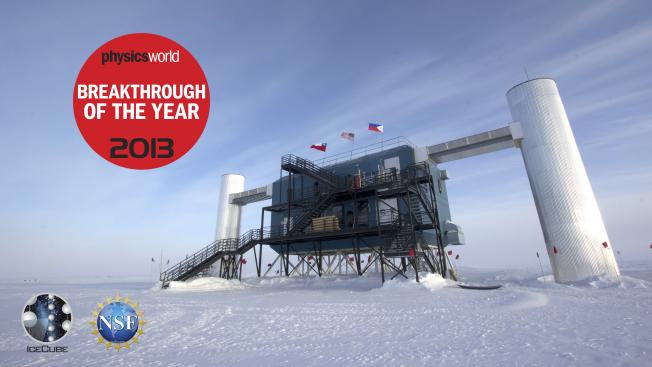Blast from the past II: Constraints on heavy neutral leptons from the BEBC WA66 beam dump experiment
(2022)
Low energy event reconstruction in IceCube DeepCore
European Physical Journal C Springer Nature 82:9 (2022) 807
Graph Neural Networks for Low-Energy Event Classification & Reconstruction in IceCube
(2022)
A challenge to the standard cosmological model
IOP Publishing 937:2 (2022) L31
Abstract:
We present the first joint analysis of catalogs of radio galaxies and quasars to determine whether their sky distribution is consistent with the standard ΛCDM model of cosmology. This model is based on the cosmological principle, which asserts that the universe is statistically isotropic and homogeneous on large scales, so the observed dipole anisotropy in the cosmic microwave background (CMB) must be attributed to our local peculiar motion. We test the null hypothesis that there is a dipole anisotropy in the sky distribution of radio galaxies and quasars consistent with the motion inferred from the CMB, as is expected for cosmologically distant sources. Our two samples, constructed respectively from the NRAO VLA Sky Survey and the Wide-field Infrared Survey Explorer, are systematically independent and have no shared objects. Using a completely general statistic that accounts for correlation between the found dipole amplitude and its directional offset from the CMB dipole, the null hypothesis is independently rejected by the radio galaxy and quasar samples with p-values of 8.9 × 10−3 and 1.2 × 10−5, respectively, corresponding to 2.6σ and 4.4σ significance. The joint significance, using sample-size-weighted Z-scores, is 5.1σ. We show that the radio galaxy and quasar dipoles are consistent with each other and find no evidence for any frequency dependence of the amplitude. The consistency of the two dipoles improves if we boost to the CMB frame assuming its dipole to be fully kinematic, suggesting that cosmologically distant radio galaxies and quasars may have an intrinsic anisotropy in this frame.IceCube search for neutrinos coincident with gravitational wave events from LIGO/Virgo run O3
(2022)



